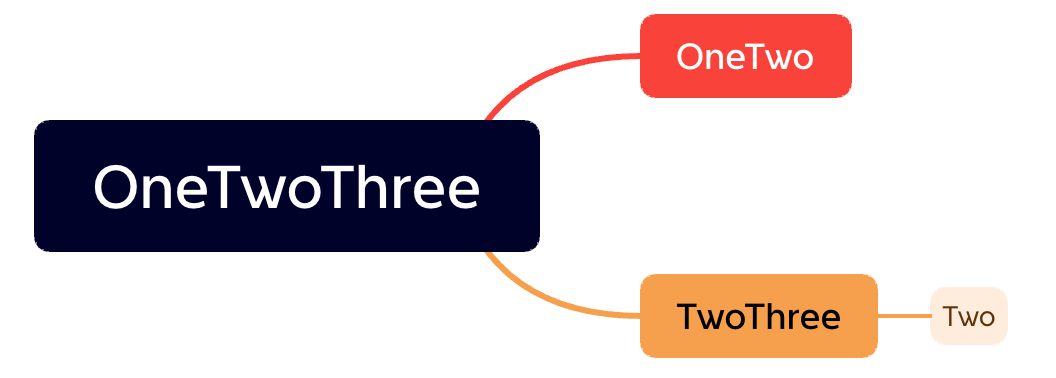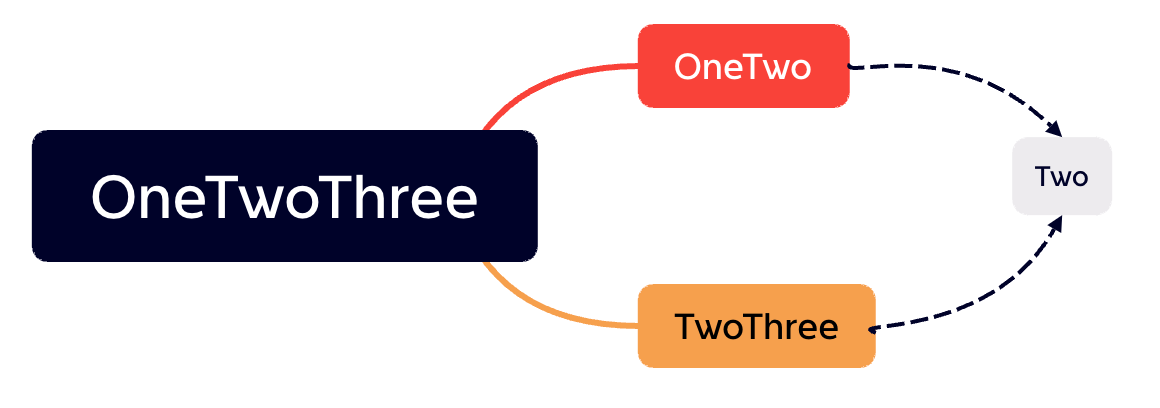CodeQL学习笔记(1)-QL语法(逻辑连接词、量词、聚合词、谓词和类)
最近在学习CodeQL,对于CodeQL就不介绍了,目前网上一搜一大把。本系列是学习CodeQL的个人学习笔记,根据个人知识库笔记修改整理而来的,分享出来共同学习。个人觉得QL的语法比较反人类,至少与目前主流的这些OOP语言相比,还是有一定难度的。与现在网上的大多数所谓CodeQL教程不同,本系列基于
官方文档
和
情景实例
,包含大量的个人理解、思考和延伸,直入主题,只切要害,几乎没有废话,并且坚持用从每一个实例中学习总结归纳,再到实例中验证。希望能给各位一点不一样的见解和思路。当然,也正是如此必定会包含一定的错误,希望各位大佬能在评论区留言指正。
先来看一下一些基本的概念和结构
// 基本结构
from /* variable declarations */
where /* logical formulas */
select /* expressions */
from int a, int b
where x = 3, y = 4
select x, y
// 找出1-10内的勾股数
from int x, int y, int z
where x in [1..10], y in [1..10], z in [1..10] and
x * x + y * y = z * z
select x, y, z
// 或下面这种类写法,封装和方法复用
class SmallInt extends int {
SmallInt(){
this in [1..10]
}
int square(){
result = this * this
}
}
from SmallInt x, SmallInt y, SmallInt z
where x.sqrt() + y.square() = z.sqrt()
select x, y, z
逻辑连接词、量词、聚合词
from Person p
where p.getAge() = max(int i | exists(Person t | t.getAge() = i ) | i) // 通用聚合语法,比较冗长
select p
// 或用以下有序聚合方式
select max(Person p | | p order by p.getAge())
exists(<变量声明> | <条件表达式>)
<aggregates> ( <变量声明> | <逻辑表达式(限制符合条件的数据范围)> | <表达式(返回经过筛选的)> )e.g.
exists( Person p | p.getName() = "test" )
,判断是否存在一个人的名字为test
max(int i | exists(Person p | p.getAge() = i) | i)
,第二部分的意思是拿到所有人的年龄放入i,第三部分是作用范围为i,目前i为int数组,存放所有人的年龄,即最终计算的是
max(i)
select max(Person p | | p order by p.getAge())
,考虑每个人,取出年龄最大的人。过程是按照年龄来取最大值,换句话说,
order by p.getAge()
是告诉 max() 函数要基于 getAge() 来找最大值,并不涉及对所有对象的排序操作。
// 其他有序聚合练习
select min(Person p | p.getLocation() = "east" | p order by p.getHeight()) // 村东最矮的人
select count(Person p | p.getLocation() = "south" | p) // 村南的人数
select avg(Person p | | p.getHeight()) // 村民平均身高
select sum(Person p | p.getHairColor() = "brown" | p.getAge()) // 所有棕色头发的村民年龄总和
// 综合练习,https://codeql.github.com/docs/writing-codeql-queries/find-the-thief/#the-real-investigation
import tutorial
from Person p
where
p.getHeight() > 150 and // 身高超过150
not p.getHairColor() = "blond" and // 头发颜色不是金发
exists(string c | p.getHairColor() = c) and // 不是秃头。这里表示这个人存在某种发色,但不用具象化
not p.getAge() < 30 and // 年龄满30岁。也可以是p.getAge() >= 30
p.getLocation() = "east" and // 住在东边
( p.getHairColor() = "black" or p.getHairColor() = "brown" ) and // 头发是黑色或棕色
not (p.getHeight() > 180 and p.getHeight() < 190) and // 没有(超过180且矮于190)
exists(Person t | t.getAge() > p.getAge()) and // 不是最年长的人。这里用存在语法是,存在一个人比他的年龄大
exists(Person t | t.getHeight() > p.getHeight()) and // 不是最高的人
p.getHeight() < avg(Person t | | t.getHeight()) and // 比平均身高要矮。所有人,没有限制范围
p = max(Person t | t.getLocation() = "east" | t order by t.getAge()) // 东部年纪最大的人。这一行是官方给的参考,但是官方文档中说 "Note that if there are several people with the same maximum age, the query lists all of them.",如果存在最大年龄相同的两个人会同时列出,可能会造成不可控的后果。
// p.getAge() = max(Person t | t.getLocation() = "east" | t.getAge()) // 按照个人理解和chatgpt的解答,应该使用这种方式
select p
谓词和类别
CodeQL中的谓词(Predicates)的说法大概可以理解为其他高级编程语言中的函数,同样拥有可传参、返回值、可复用等特性
先来看一个简单的例子
import tutorial
predicate isSouthern(Person p) {
p.getLocation() = "south"
}
from Person p
where isSouthern(p)
select p
这里的predicate为一个逻辑条件判断,返回true or false,有些类似于boolean,当然ql中有单独的boolean类型,还是有一定区别的,只是理解上可以联系起来理解,这里先不展开
谓词的定义方式和函数类似,其中的predicate可以替换为返回结果类型,例如
int getAge() { result = xxx }
,谓词名称只能以小写字母开头
此外,还可以定义一个新类,直接包含isSouthern的人
class Southerner extends Person {
Southerner() { isSouthern(this) }
}
from Southerner s
select s
这里类似于面向对象语言(OOL)中的类定义,同样拥有继承、封装、方法等;这里的
Southerner()
类似于构造函数,但是不同于类中的构造函数,这里是一个逻辑属性,并不会创建对象。ool类中的方法在ql中被称为类成员谓词表达式
isSouthern(this)
定义了这个类的逻辑属性,称作
特征谓词
,他用一个变量
this
(这里的this理解同ool)表示:如果属性
isSouthern(this)
成立,则一个
Person
--
this
是一个
Southerner
。简单理解就是ql中每个继承子类的特征谓词表示的是
什么样的父类是我这种子类
、
我这种子类在父类的基础上还具有什么特征/特性引用官方文档:QL 中的类表示一种逻辑属性:当某个值满足该属性时,它就是该类的成员。这意味着一个值可以属于许多类 — 属于某个特定类并不妨碍它属于其他类。
来看下面这个例子
class Child extends Person {
Child(){
this.getAge() < 10
}
override predicate isAllowedIn(string region) {
region = this.getLocation()
}
}
// Person父类中的isAllowedIn实现如下:
predicate isAllowedIn(string region) { region = ["north", "south", "east", "west"] }
// 父类isAllowedIn(region)方法永远返回的是true,子类返回的是当前所在区域才为true(getLocation()方法)
看一个完整的例子
import tutorial
predicate isSoutherner(Person p) {
p.getLocation() = "south"
}
class Southerner extends Person {
Southerner(){isSoutherner(this)}
}
class Child extends Person {
Child(){this.getAge() < 10}
override predicate isAllowedIn(string region) {
region = this.getLocation()
}
}
from Southerner s
where s.isAllowedIn("north")
select s, s.getAge()
这里有个概念非常重要,要与ool的类完全区别开来,在ool的类中,继承的子类中重构的方法是不会影响其他继承子类的,每个子类不需要考虑是否交错。但是在QL中,引用官方文档的一句话
QL 中的类表示一种逻辑属性:当某个值满足该属性时,它就是该类的成员。这意味着一个值可以属于许多类 — 属于某个特定类并不妨碍它属于其他类
,在ql的每个子类中,只要满足其特征谓词,就是这个子类的成员。
针对如上代码中这个具体的例子,如果Person中有人同时满足Southerner和Child的特征关系,则同时属于这两个类,自然也会继承其中的成员谓词。
个人理解,其实QL中的子类就是把父类全部拿出来,然后根据特征谓词来匹配父类中的某些元素,然后去复写/重构其中的这些元素的成员谓词,事实上是对父类中的元素进行了修改。下面用三个实例来对比理解
// 从所有Person中取出当前在South的,然后取出其中能去north的。因为把child限定了只能呆在当地,因此取出的这部分Southerner中的Child全都没法去north,因此就把这部分(原本在South的)Child过滤了
from Southerner s
where s.isAllowedIn("north")
select s
// 取出所有Child,因此他们都只能呆在原地,因此找谁能去north就是找谁原本呆在north
from Child c
where c.isAllowedIn("north")
select c
// 取出所有Person,要找谁能去north的,即找所有成年人(默认所有人都可以前往所有地区)和找本来就呆在north的Child
from Person p
where p.isAllowedIn("north")
select p
延伸一下,如果多个子类别同时重构override了同一个成员谓词,那么遵循如下规则(先假定有三个类A、B、C)(后面有总结):
- 假定A是父类,即其中的某个成员谓词
test()
没有override,B和C同时继承A,并且都override了A的
test()
成员谓词。
- 如果from的谓词类型是A,则其中的
test()
方法会被B和C全部改写。碰到B与C重叠的部分,不冲突,保持并存- 如果from的谓词类型是B或C,则以B/C为基础,在满足B/C的条件下加上与另一个重叠的部分,不冲突,保持并存
- 如果A是父类,B继承A,C继承B,则C会把B中的相同成员谓词override掉,而不是共存
- 对于多重继承,C同时继承A和B,如果A和B的成员谓词有重合,则C必须override这个谓词
例如:
class OneTwoThree extends int { OneTwoThree() { // 特征谓词 this = 1 or this = 2 or this = 3 } string getAString() { // 成员谓词 result = "One, two or three: " + this.toString() } } class OneTwo extends OneTwoThree { OneTwo() { this = 1 or this = 2 } override string getAString() { result = "One or two: " + this.toString() } } from OneTwoThree o select o, o.getAString() /* result: o getAString() result 1 One or two: 1 2 One or two: 2 3 One, two or three: 3 // 理解:onetwothree类定义了1 2 3,onetwo重构了onetwothree中1和2的成员谓词。因此onetwothree o中有3个,其中的1和2使用onetwo的成员谓词,3使用onetwothree的成员谓词 */情况1: 在这个基础上加上另一个类别(重要),A->B, A->C
class TwoThree extends OneTwoThree{ TwoThree() { this = 2 or this = 3 } override string getAString() { result = "Two or three: " + this.toString() } } /* command: from OneTwoThree o select o, o.getAString() result: o getAString() result 1 One or two: 1 2 One or two: 2 2 Two or three: 2 3 Two or three: 3 // 理解:twothree和onetwo重合了two,但是不像其他ool,ql并不会冲突,而是并存。 --- command: from OneTwo o select o, o.getAString() result: 1 One or two: 1 2 One or two: 2 2 Two or three: 2 // 理解:twothree和onetwo都重构了其中的2,由于ql不会冲突,所以并存。由于o的类型是onetwo,因此"地基"是1和2,然后再加上twothree重构的2 --- command: from TwoThree o select o, o.getAString() result: 2 One or two: 2 2 Two or three: 2 3 Two or three: 3 // 理解: twothree和onetwo都重构了2,由于ql不会冲突,会并存。由于o的类型是twothree,所以“地基”是2和3,然后再加上onetwo重构的2 */情况2: A->B->C(继承链)
class Two extends TwoThree { Two() { this = 2 } override string getAString() { result = "Two: " + this.toString() } } from TwoThree o select o, o.getAString() /* result: o getAString() result 1 One or two: 2 2 Two: 2 3 Two or three: 3 // 理解:在上面的例子的基础上,Two重构了twothree中的成员谓词,因此与twothree不是共存关系 */ from OneTwo o select o, o.getAString() /* result: o getAString() result 1 One or two: 1 2 One or two: 2 3 Two: 2 // 理解:在之前例子的基础上,OneTwo和TwoThree共存,但是Two把TwoThree中的一部分给override了(即Two和TwoThree并不是共存关系) */阶段总结:根据上面这么多例子的学习,总结归纳起来其实很简单,核心要义就是搞清楚“继承链关系”。如果两个类别是继承的同一个父类,那么他们两个的结果共存;如果两个类是从属关系(父与子),那么子类覆盖父类对应的部分。
例如上面的例子中,OneTwo和TwoThree是并存关系,同时继承OneTwoThree,所以他们的结果共存,不冲突;TwoThree和Two是从属关系,所以根据最子类优先原则,覆盖对应TwoThree中的内容(Two也间接继承OneTwoThree,所以对所有父类包括OneTwoThree造成影响)。
情况3: 多重继承
class Two extends OneTwo, TwoThree { Two() { this = 2 } override string getAString() { result = "Two: " + this.toString() } } // 解释1:Two同时继承TwoThree和OneTwo,如果不写条件谓词,则默认为同时满足两个父类条件,如果写,则范围也要小于等于这个交集范围。 // 解释2:如果多重继承的父类中同一名称的成员谓词有多重定义,则必须覆盖这些定义避免歧义。在这里的Two的getAString()是不能省略的 from OneTwoThree o select o, o.getAString() /* result: o getAString() result 1 One or two: 1 2 Two: 2 3 Two or three: 3 // 理解:由于two与onetwo和twothree是父子关系,因此直接把共有的two全部覆盖,不是并存关系 */
在这个基础上再去创建一个谓词,用于判断是否是秃头isBald
predicate isBald(Person p) {
not exists(string c | p.getHairColor() = c) // 不加not表示某人有头发
}
// 获得最终结果,允许进入北方的南方秃头
from Southerner s
where s.isAllowedIn("north") and isBald(s)
select s, s.getAge()


